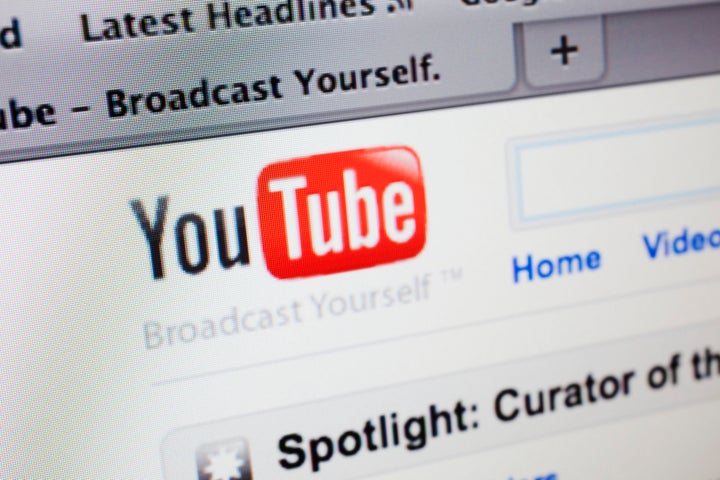
In 1996, President Bill Clinton signed the Telecommunications Act, which, written at the height of the culture wars, included a provision addressing "Obscenity and Violence." Among other things, the bill required all new television sets to include the "V-chip," technology that allows parents to control what their children watch on TV.
Critics of the legislation claimed it was unconstitutional on the grounds that aspects of the amendment violated basic First Amendment rights. I'm a writer and director, and the freedom to tell stories that capture life in all of its glories, and even its ugliness, is vital to what I do. But it seems reasonable to give parents tools to moderate what their children are exposed to—and the Supreme Court ultimately agreed. While the anti-decency provisions were struck down, the V-chip survived.
Rolled out in 2010, YouTube's "Restricted Mode" similarly filters out content on the popular video-sharing platform that may be inappropriate for minors. It was perhaps an inevitable development given the increasing ubiquity of internet video. The sheer volume of content, however, led to a keyword-based filtering system, and in March of last year, changes to the algorithm resulted in thousands of LGBTQ creators discovering that our videos had been restricted.
At the time, a YouTube representative informed me via email that the company was taking the issue seriously, referring me to an official statement on the matter. YouTube's website proudly states, "Sharing stories about facing discrimination, opening up about your sexuality, and confronting and overcoming discrimination is what makes YouTube great, and we will work to ensure those stories are included in Restricted Mode." Specifically, "Some educational, straightforward content about sexual education, affection, or identity may be included in Restricted Mode, as well as kissing or affection that's not overly sexualized or the focal point of the video."
Nearly a year later, LGBTQ creators continue to be affected and videos that meet the description above are still restricted. Despite multiple requests for review, most of my content is not visible in Restricted Mode, including my contribution to It Gets Better, a campaign specifically designed to prevent suicide among at-risk youth.
Sadly, the ongoing issue with Restricted Mode was only the beginning of what has turned out to be a devastating twelve months for YouTubers, specifically LGBTQ creators. Last summer, advertising revenue on my channel suddenly plummeted due to the implementation of a widely criticized new filter, resulting in what's been coined the "adpocalypse." Videos that include anything that might be deemed objectionable are flagged by YouTube as "not suitable for most advertisers" and thus demonetized, preventing many creators from making money from their work.
The criteria for what YouTube deems not suitable is alarmingly expansive, including "controversial issues and sensitive events," a sweeping classification that encompasses politics, war, and "recent tragedies, even if presented for news or documentary purposes." It also, apparently, includes anything even tangentially LGBTQ-related.
In short, unless you create makeup tutorials or supercuts of cats napping, you're no longer permitted to earn revenue on YouTube. And if you're a queer creator who happens to make those kinds of videos, you may not make any money either. (No offense, sleepy kittens!)
Advertisers absolutely have the right to decide where, when, and to whom their content is shown. But YouTube's draconian new policies are too broad, allowing LGBTQ videos of even the most benign nature to get swept up in the process.
Several of my videos have been deemed not suitable for advertisers, including my short film Great Escape, about a restless retiree who leaves her husband for another woman, and the trailers for my films Pink Moon and Requited. Meanwhile, the violent, expletive-filled trailer for I, Tonya is loaded with ads, and if the double standard weren't already blatantly obvious, it also includes a homophobic epithet.
Last November, my film Sam, about a bullied trans boy who embarks on a journey of self-discovery, suddenly no longer appeared on my channel or in search results, and it's been demonetized. YouTube claims this is the result of new efforts to prevent "predatory behavior" on the site by demonetizing or removing videos that "target children."
Sam has screened at film festivals around the world, has been shown to kids in classrooms, and has been viewed over six million times on YouTube. But now it's being hidden from you.
This is unacceptable.
I say all of this not just because LGBTQ content deserves to be seen, or because people have the right to access it freely, but because queer creators have a right to earn a living. I'm not a traditional "YouTuber"—that is, I don't create videos specifically for YouTube—but being able to share and monetize my films on the site has helped me pay the bills, making it possible for me to continue making movies.
More importantly, ad-based revenue allows creators like me to keep content free and accessible to everyone. LGBTQ stories aren't just important, they're essential. These are our lives—our loves, our struggles, our triumphs—and there is nothing "sensitive" or offensive about them. These stories save lives. Every day I hear from people who have been affected by my work. I recently received a call from a friend I hadn't spoken to in years; she'd just met a bartender who said Sam changed his life. People desperately need—and deserve—to see themselves in art and media.
YouTube's inaction sends a message to gay, lesbian, bisexual, transgender, and questioning young people that their stories, their work, their careers—their lives—do not matter. During a conference call with two YouTube representatives last month, I was assured that steps were being taken to fix what they admitted where flaws in the system. One of the representatives also wanted me to know that these issues are important to him because he's gay. But it's mere lip service unless things change.
The V-chip works by blocking inappropriate TV programming based on a voluntary rating system. It was modeled after the Motion Picture Association of America's ratings for theatrical movie releases. YouTube's new policies, on the other hand, have been clumsily and indiscriminately implemented at best, with no input or involvement from creators themselves.
Fix it, YouTube.
Design a rating system that's fair and transparent. Allow advertisers to opt out of "sensitive" content in a more granular way. Temporarily remove filters that directly affect LGBTQ creators until you find a permanent solution. But do it now.
Until then, I'm exploring alternatives to YouTube, including REVRY, which bills itself as "the world's first LGBTQ+ digital streaming platform," and Vimeo On Demand, where I can offer exclusive bonus content and other features for my films Chaser and Pink Moon.
Unfortunately, YouTube is still the biggest, most powerful platform for free independent video distribution. In an increasingly hostile media environment, where the repeal of Net Neutrality—which Google, who owns YouTube, publicly opposes—threatens to limit our access to the internet, they must be a leader. Businesses, no matter how large or powerful, cannot implement policies that effectively discriminate against LGBTQ people without paying a price. Right now, independent creators like me are the ones footing the tab.
